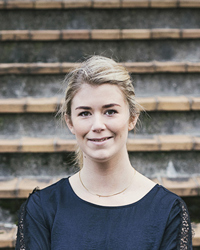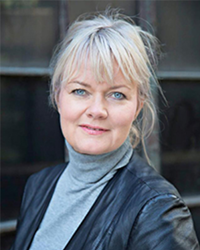Tele-homecare for children born prematurely
When a child is born prematurely, it is hospitalised for a significant period of time. In Denmark, it is a regular practice that premature children are admitted to the hospital with their mother until the child is able to be breast or bottle-fed and gain weight without supplementary nutrition from a stomach tube. This usually happens around the original due date.
PROJECT PERIOD
Start: 2014
End: December 2017
For many families, this means spending several weeks in hospital and difficulties establishing their new life as a family, because the father is not admitted with mother and child. The unease of being in the hospital often causes difficulties with breastfeeding and getting the necessary sleep for both mother and child. And if there are older brothers and sisters in the family, it can be difficult to make ends meet and get a good start together as a family.
AIM
The aim of the research project was to test early discharge of mother and baby from the hospital with support from a telemedicine solution to ensure close contact with the staff at the hospital and continuous monitoring of the growth and general health of the newborn child.
This resulted in neonatal tele-homecare where the families can go home with support from the staff in the neonatal department through an iPad provided by the hospital. The iPad contained the app My Hospital which has information about the care of a premature baby, secure messaging and a video call feature. The parents were instructed at the hospital on how to feed, weigh and measure the growth of the child and used the app to send data to the hospital twice a week before video consultation with a nurse.
RESULTS
The research project has shown great results. More than 90 children and families have been admitted to their homes with the telemedicine solution. The families were pleased with the offer because they were given a calm start without losing the professional help of the hospital. At the end of the project period, tele-homecare was immediately put into clinical service.
The project showed that more children are being breastfed with tele-homecare, and the children’s growth is satisfactory. The children are in the hospital for a shorter period of time which optimises the use of resources, and the department can treat more patients concurrently.
ASSESSMENT
CIMT has made a cost analysis of the research project to assess the difference between infants who received telemedicine and a historic control group of infants that were monitored in the hospital as usual. The analysis shows that tele-homecare is not more expensive than traditional neonatal care, because it reduces the number of in-hospital bed days. The reduction of in-hospital days also makes up for the expenses for technology and equipment. Read the scientific article on the cost analysis.
The clinical assessment was also very positive; both parents and staff were very content with tele-homecare.
PARTNERS
The project was a PhD project by Kristina Garne Holm. Write to Kristina Garne Holm or visit Kristina’s profile at LinkedIn.
EXTERNAL FUNDING
The project received funds from the Region of Southern Denmark, Odense University Hospital, University of Southern Denmark, Helsefonden and the Aase and Ejnar Danielsen's Foundation,

Kristina Garne Holm
Researcher, PhD
Odense University Hospital, Hans Christian Andersen Hospital for Children and Adolescents
(+45) 6541 2360 kristina.holm@rsyd.dk

Maja Kjær Rasmussen
HTA Consultant
Odense University Hospital, Dept. of Clinical Development - Innovation, Research & HTA
(+45) 5190 0893 mkr@rsyd.dk

Jane Clemensen
Head of Research, professor, nurse
University of Southern Denmark, Department of Clinical Research
(+45) 2434 2024 jclemensen@health.sdu.dk
